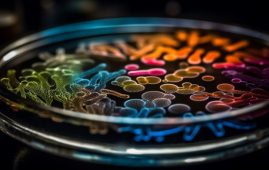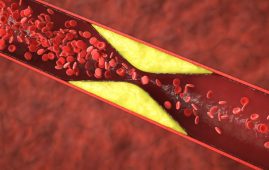

Professor Murray Cairns of HMRI and the University of Newcastle, along with his Precision Medicine team, have identified a mechanism to predict who will respond to blood pressure therapies to lower sodium levels in the body. Their findings were published this week in the prominent international cardiology journal Circulation.
According to Professor Cairns, “high blood pressure – or hypertension-related disease – kills up to 20% of people.” At least 30% of the adult population has it – that’s one in every three Australians – and only 30% of those people have it under control.
“A 25% reduction in the prevalence of hypertension could save the Australian Government $34 billion per year,” says Professor Cairns.
Professor Cairns and his colleagues have discovered how to use each person’s unique DNA to guide treatment.
The way people respond to drugs is different. We can measure an individual’s genetic risk of developing high blood pressure with respect to the physiological systems responsible – including kidneys, heart or smooth muscle – and then target medications accurately.”
Professor Murray Cairns
Some hypertension drugs act by lowering salt levels in the body, and hence blood volume. According to Professor Cairns, while many people have a hereditary predisposition to high blood pressure, which is triggered or aggravated by a high salt modern diet, they will react well to sodium-reduced treatment. He also claims that for some people, salt isn’t a major role in their hypertension, so they might benefit more from medicines that target other biological features of their genetic risk.
With 80% of people developing some kind of chronic disease, and 20% developing two or more, genetic findings driving precision medicine have the potential to have a major influence on global health.
The researchers used real-world data from the UK biobank to examine the relationship between sodium-associated genetic scores, sodium levels, and blood pressure.
For more information: Reay, W. R., et al. (2023). Using Genetics to Inform Interventions Related to Sodium and Potassium in Hypertension. Circulation. doi.org/10.1161/circulationaha.123.065394.
more recommended stories
 Healthy Habits Slash Diverticulitis Risk in Half: Clinical Insights
Healthy Habits Slash Diverticulitis Risk in Half: Clinical InsightsHealthy Habits Slash Diverticulitis Risk in.
 Caffeine and SIDS: A New Prevention Theory
Caffeine and SIDS: A New Prevention TheoryFor the first time in decades,.
 Microbial Metabolites Reveal Health Insights
Microbial Metabolites Reveal Health InsightsThe human body is not just.
 Reelin and Cocaine Addiction: A Breakthrough Study
Reelin and Cocaine Addiction: A Breakthrough StudyA groundbreaking study from the University.
 Preeclampsia and Stroke Risk: Long-Term Effects
Preeclampsia and Stroke Risk: Long-Term EffectsPreeclampsia (PE) – a hypertensive disorder.
 Statins and Depression: No Added Benefit
Statins and Depression: No Added BenefitWhat Are Statins Used For? Statins.
 Azithromycin Resistance Rises After Mass Treatment
Azithromycin Resistance Rises After Mass TreatmentMass drug administration (MDA) of azithromycin.
 Generative AI in Health Campaigns: A Game-Changer
Generative AI in Health Campaigns: A Game-ChangerMass media campaigns have long been.
 Molecular Stress in Aging Neurons Explained
Molecular Stress in Aging Neurons ExplainedAs the population ages, scientists are.
 Higher BMI and Hypothyroidism Risk Study
Higher BMI and Hypothyroidism Risk StudyA major longitudinal study from Canada.

Leave a Comment